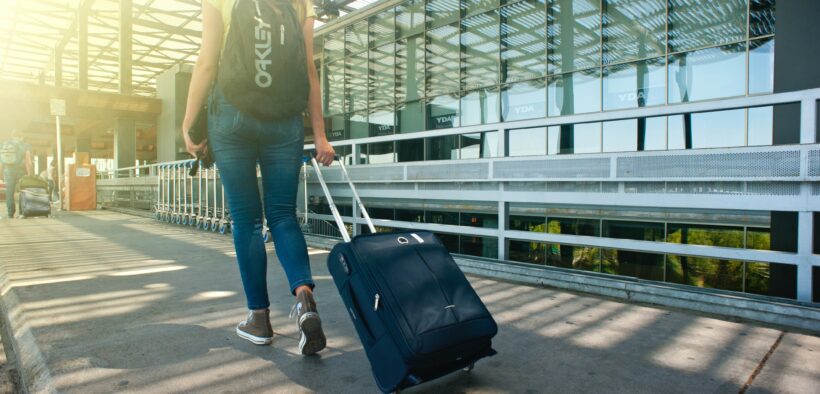Skincare In The Air: How to take care of your skin during those long-haul flights?
Share

Thanks to the Wright Brothers, humans can go airborne! However, air travel comes at a cost…not only in relation to your wallet but also your skin. Long flights often encourage dry, flaky, irritated and highly UV exposed skin (in addition to other things). The air at 30,000 feet contains about 20 percent humidity and there isn’t enough moisture keeping your skin hydrated so you really have to focus on moisturization and hydration. Here are a few things to consider for your skincare routine during your next long-haul flight.
Cleansing
Is it really important to cleanse your face during your flight? While there isn’t any dirt up in the air, the dirt and product from the ground that traveled 30,000 feet high with you is seeping into your pores. In addition, due to the already dry environment on the plane, your skin will produce more oil to counteract with the dryness and you likely don’t want greasy, irritated skin.
To avoid acne and irritation, you can quickly visit the airport bathroom to remove your makeup and cleanse with a gentle water-based cleanser before your flight takes off. Make sure to use non-stripping products…that means no makeup wipes as those will only dry out your skin further. If you don’t have much time to cleanse your skin in the airport, using a travel-sized micellar water or an oil-based cleanser is a great choice for removing the dirt and excess product on your flight. The micellar water is particularly convenient because you can apply it without leaving your seat. You can then choose to use a gentle water-based cleanser to thoroughly cleanse your skin.
Hydration and Moisturization
If you don’t drink enough water when not on the plane, you should really consider drinking plenty up in the air! Hydration is key for your skin to survive the flight. Moisturization is important to prevent transepidermal water loss (TEWL), which is essentially losing water in your skin. Focusing on this particular step is very important. That means, gather all your hydrating serums, creams, and masks!
You can splash some water on your face and seal it in with a travel-sized hyaluronic acid serum to retain water in your skin. Then you can seal in the hydration with a rich moisturizer. You can also apply a hydrating sheet mask to get some extra hydration in. Avoid using products that carry high concentrates of fragrance, because they can further dry out your skin. If you feel that your skin is flaking, you can try applying some petroleum jelly on that area. During your flight, your mucus membranes can also dry out so make sure to regularly apply a good lip balm (or petroleum jelly) on your lips and nose.
Sunscreen in the air?
Now I know what you’re thinking, why would you need sunscreen if you’re inside a plane for hours? Well, you will still be exposed to UV rays through the windows…so, wear that sunscreen and be sure to reapply. It has been shown that “….pilots and cabin crew members have much higher rates of melanoma than the average person” as there is higher UV radiation up in the air than on the ground. (Demarest)
Bonus Tip
Have you ever noticed that your face looks worn out and puffy after a long flight? Along with restless sleep, water retention from sitting can cause bloat and your face may look puffy. High altitudes can also exacerbate circulation problems, which is why it’s a good idea to move around during a flight. It’s best not to sit with your legs crossed and try to take short walks up and down the aisle and do some light stretching, if you can.
References:
- Cover image by Oleksandr Pidvalnyi
- Demarest, Abigail Abesamis. “Dermatologists Share the Must-Have Skin Care Products They Bring on a Plane.” HuffPost, HuffPost, 26 May 2022 [Link]
- “Hyaluronic Acid: What It Is, Benefits, How to Use & Side Effects.” Cleveland Clinic [Link]
- Shortsleeve, Cassie. “This Is Exactly What Happens to Your Skin on a Plane.” Allure, 31 Aug. 2016 [Link]







